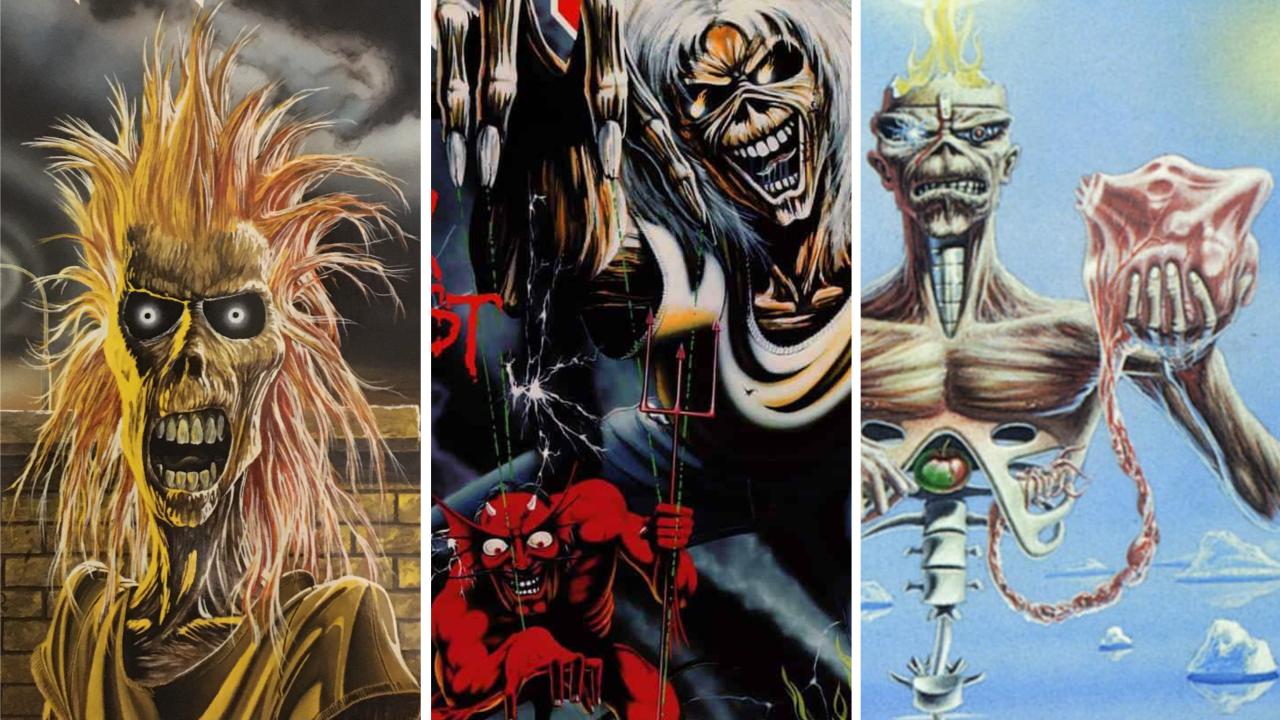
You know who Iron Maiden are. Even if you’re just starting to pay attention to heavy metal, you’ve heard The Beast’s grandiose songs, marvelled at the air-raid siren blare of Bruce Dickinson or seen their emaciated mascot Eddie along the way. However, with a massive 17-album back-catalogue, it can be hard to wrap your head around this band’s near-five-decade musical journey.
This is where we come in. Below, Metal Hammer’s helped you skip the filler by listing the five essential Maiden albums that best tell their story, warts and all. This isn’t a list of their greatest albums, mind – just the stuff that most concisely catalogues their complete history. And, if you’re just now getting on board, we hope it’s a helpful intro to one of heavy music’s most powerful names.

Iron Maiden (1980)
You can’t discuss essential Maiden without bringing up the debut album. At the height of the New Wave Of British Heavy Metal, the band integrated punk rock attitude and proggy grandeur into the genre and single-handedly revolutionised it. Plus, unlike some other course-changing albums, Iron Maiden still feels fresh and exciting four decades on. Phantom Of The Opera remains a towering achievement in songwriting, while frontman Paul Di’Anno is so confrontational you can practically feel his spit flying in your face with every lyric.
The Number Of The Beast (1982)
Maiden’s third album sealed their legacy forever. Not only did it mark the debut of now-quintessential singer Bruce Dickinson, but it put them on the tips of everybody’s tongues on both sides of the Atlantic. In the UK, The Number Of The Beast charted at number one. Meanwhile, thousands of miles away, the album got caught in the midst of the Satanic Panic. Countless American conservatives burned copies and denounced Maiden – but that only made the band seem cooler to everyone else.
Seventh Son Of A Seventh Son (1988)
As the final and most progressive Maiden album of the 1980s, Seventh Son… marked the culmination of The Beast’s golden age. The band only grew more experimental post-Number…, especially on the 15-minute Rime Of The Ancient Mariner and the synthy Somewhere In Time album. Here, such giant suites as the title track lived alongside the punchy Can I Play With Madness, pushing Bruce and the boys back to number one in the UK. Sadly, with lineup turmoils quickly following, this is the best this lot would sound for some time.
The X Factor (1995)
The dark days. In 1993, Bruce eyed a solo career and bounced, replaced by ex-Wolfsbane bloke Blaze Bayley. The singer’s appointment remains controversial to this day, and The X Factor certainly doesn’t help things. With Blaze’s deeper vocals and bassist/songwriter Steve Harris having recently been through a divorce, this is a less majestic Maiden than what was expected, wallowing in bleakness to the point that some find this album dull. Man On The Edge and Lord Of The Flies are still all-time bangers, though.
Senjutsu (2021)
In 1999, both Bruce and ’80s guitarist Adrian Smith returned to Maiden, bringing The Beast back to the bombastic tone of their heyday. Brave New World was a serious comeback statement, weaving through textures for upwards of an hour. However, in 2021, Senjutsu made that look tiny. This hour-and-a-half double album explores the future and feudal Japan, with the closing trilogy of ten-minute behemoths – Death Of The Celts, The Parchment and Hell On Earth – reaffirming that nothing can box in this band’s vision.






